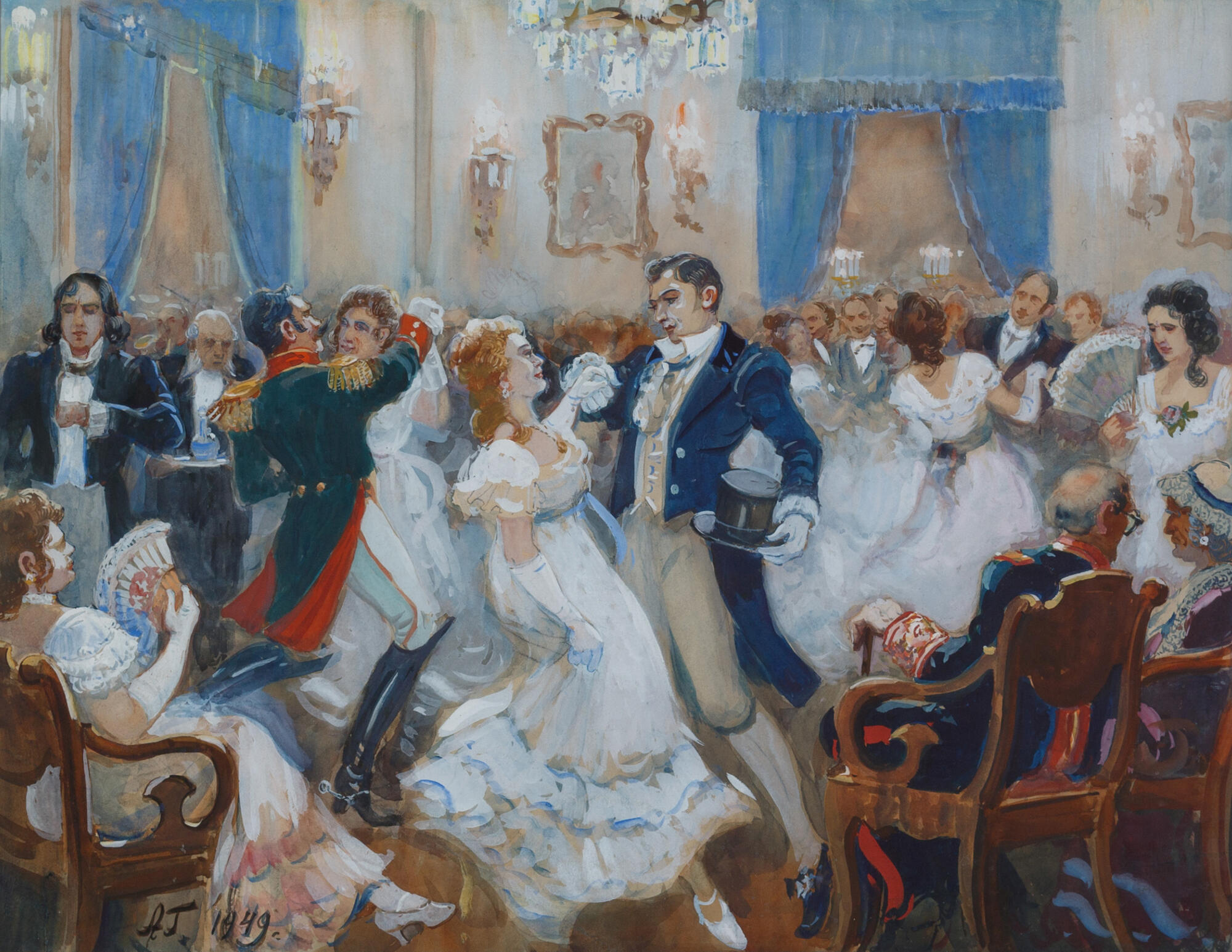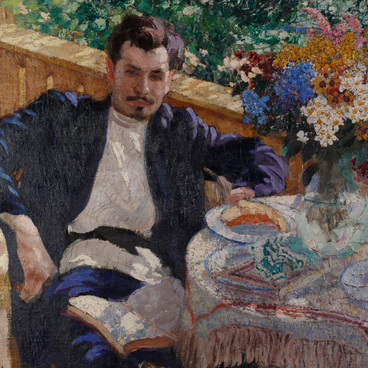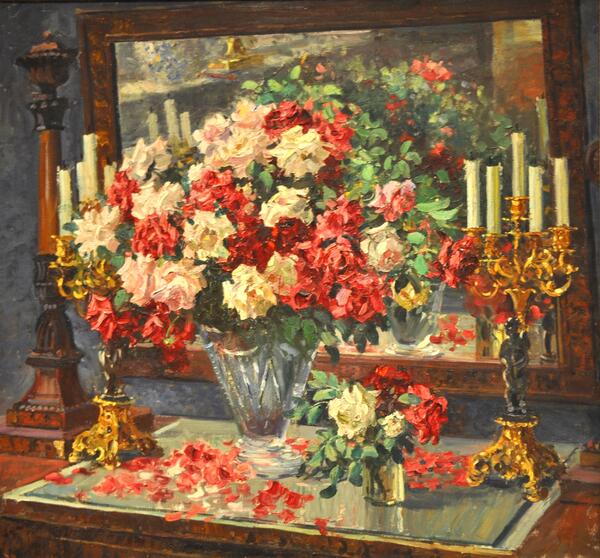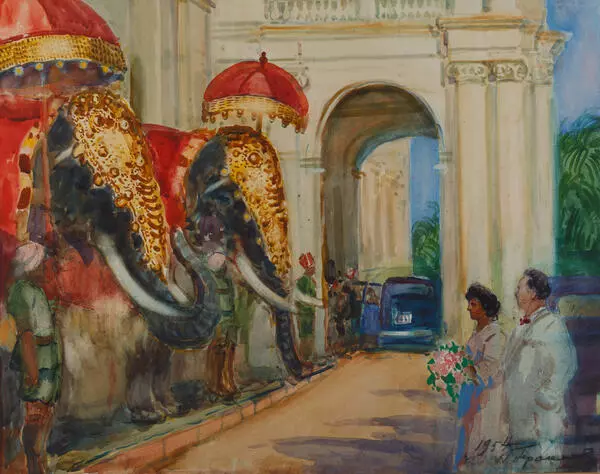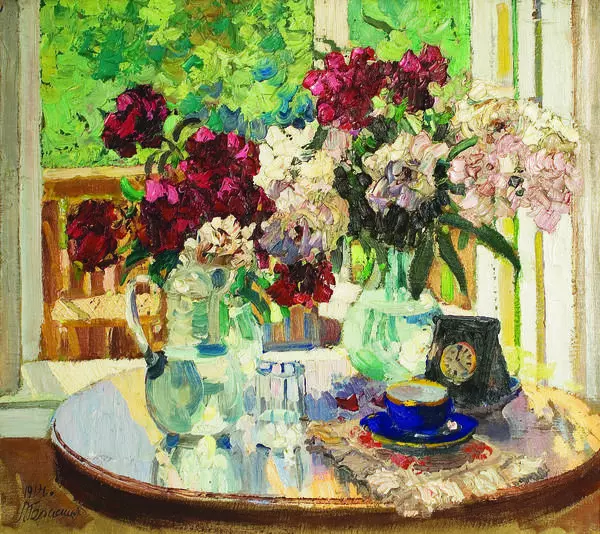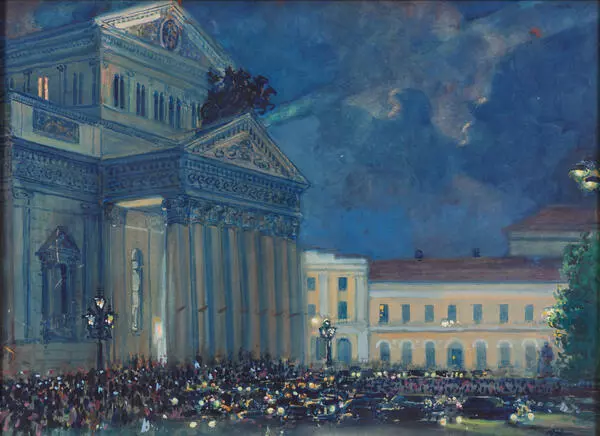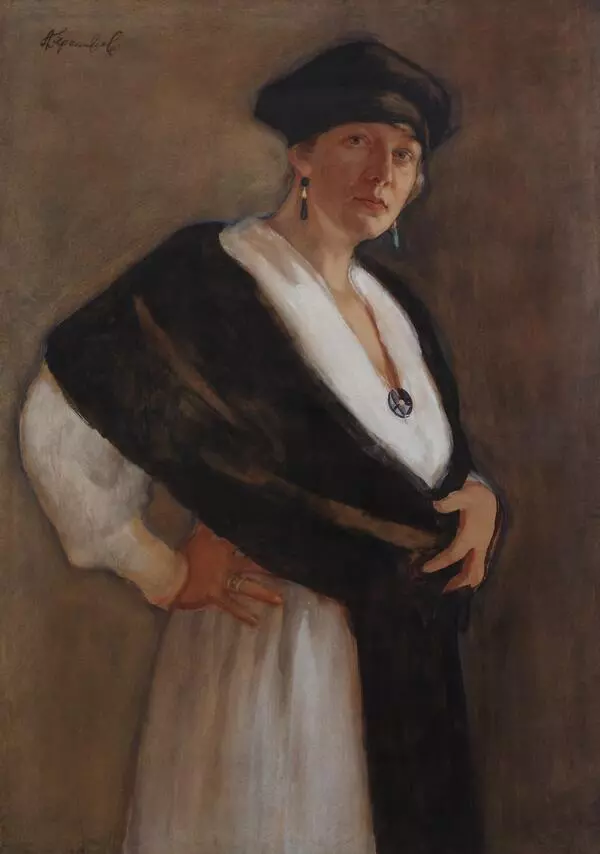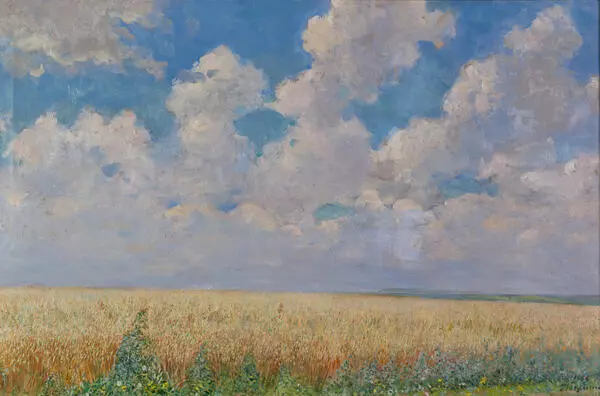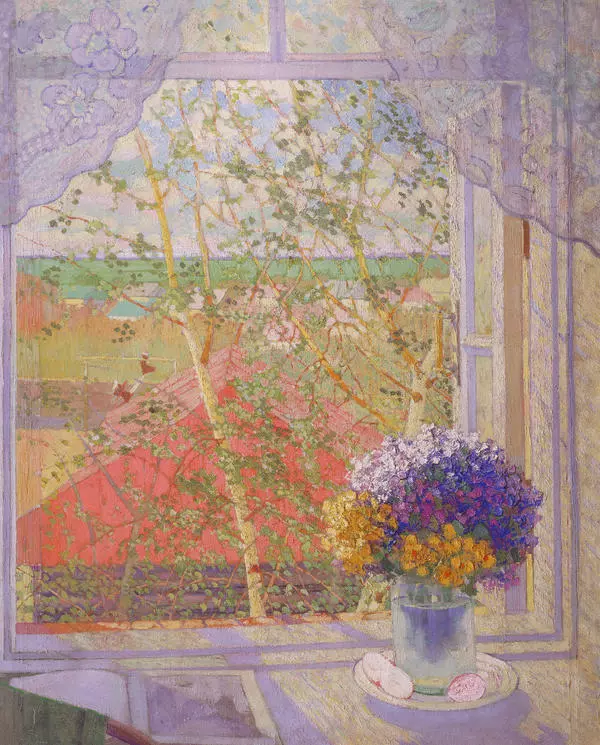Gerasimov’s book illustrations constitute a special part of his career. The topics that he chose to work on always depended on his long-standing preferences. The artist had a penchant for the works of Alexander Pushkin and Nikolai Gogol. All admirers of Russian classical literature must have come across the illustrations by Alexander Gerasimov in “Eugene Onegin” and “Taras Bulba”. In 1949, Gerasimov created drawings for the famous novel in verse to commemorate Alexander Pushkin’s 150th anniversary. They were shown among books, graphics, and posters at an exhibition, organized in 1950 by Glavizdat. Gerasimov’s “Pushkiniana” is yet another series of works from Tambov, dedicated to the great poet.
In the 1930s, Gerasimov developed an idea for a series of easel works for “Eugene Onegin” (which, however, he was unable to finish). The illustration “Ball at the Larins’” provides an insight into how meticulously the artist read Pushkin, paying attention to every possible hint in the description of not only the main characters but also the secondary ones. The painting depicts one of the climactic scenes of the novel — a ball held in a noble estate.
In this ball scene, the artist employs an academic multi-figure composition: elegantly dressed figures of men and women are engaged in dancing, and their movements are smooth and harmonious. Alexander Gerasimov emphasizes the details that were characteristic of that era (furniture, chandeliers, candelabra, paintings, etc.). The painting is dominated by soft, pastel hues, that are used in the watercolor technique, and yet is enlivened by such details as festive blue curtains and elaborate furniture. The artist accentuates the elements of 19th-century clothing (ruffles on dresses, women’s and men’s gloves, men’s frock coats, and military uniforms). The external details are not the only thing the painter emphasizes: with just a few strokes, he manages to reflect the psychological state of the depicted characters (flirtatious and playful Olga, an arrogant lady seated in an armchair, and gentlemen in a romantic mood). Gerasimov portrays his characters in a whirlwind of dance, conveying the dynamics and movement in the picture (the characters in the foreground are especially vibrant).
In the 1930s, Gerasimov developed an idea for a series of easel works for “Eugene Onegin” (which, however, he was unable to finish). The illustration “Ball at the Larins’” provides an insight into how meticulously the artist read Pushkin, paying attention to every possible hint in the description of not only the main characters but also the secondary ones. The painting depicts one of the climactic scenes of the novel — a ball held in a noble estate.
In this ball scene, the artist employs an academic multi-figure composition: elegantly dressed figures of men and women are engaged in dancing, and their movements are smooth and harmonious. Alexander Gerasimov emphasizes the details that were characteristic of that era (furniture, chandeliers, candelabra, paintings, etc.). The painting is dominated by soft, pastel hues, that are used in the watercolor technique, and yet is enlivened by such details as festive blue curtains and elaborate furniture. The artist accentuates the elements of 19th-century clothing (ruffles on dresses, women’s and men’s gloves, men’s frock coats, and military uniforms). The external details are not the only thing the painter emphasizes: with just a few strokes, he manages to reflect the psychological state of the depicted characters (flirtatious and playful Olga, an arrogant lady seated in an armchair, and gentlemen in a romantic mood). Gerasimov portrays his characters in a whirlwind of dance, conveying the dynamics and movement in the picture (the characters in the foreground are especially vibrant).
